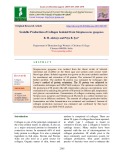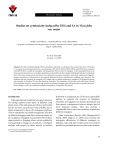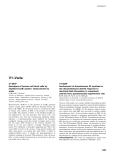
Concentration of sodium azide
-
The inhibitory effect of five antimicrobial agents at various concentrations was investigated against the growth and development of these microbial isolates. Sodium azide at 100 ppm was found to be the best treatment for both fungal and bacterial isolates.
 8p
8p  schindler
schindler
 30-12-2021
30-12-2021
 12
12
 0
0
 Download
Download
-
Tomato (Solanum lycopersicum Linn) is one of the most consumed vegetables in the world and is a dietary source of vitamin, minerals, and fiber, which are important for human nutrition and health. It is extensively grown throughout the world. Sodium Azide is a chemical mutagen that has become an important tool to enhance agronomic traits of crop plants. It is being used to produce resistance in various susceptible crops to improve their yield and quality traits against harmful pathogens.
 6p
6p  angicungduoc6
angicungduoc6
 22-07-2020
22-07-2020
 21
21
 2
2
 Download
Download
-
This study was performed by exposing the seeds of groundnut (Arachis hypogaea L.) to ethyl methane sulphonate [EMS] sodium azide [SA] to study their effects on various morphological traits when compared with control. The seeds of groundnut were pre-soaked in distilled water for 6 hours for ems and 24 hrs for SA. The SA, EMS solution was prepared in distilled water. Each concentration of SA, EMS was prepared in 100ml of distilled water for 300 groundnut seeds. These soaked seeds treated with different concentration of SA, EMS such as 0.2%, 0.4%, 0.6%, 0.8, 0.10% and 0.12 %.
 8p
8p  nguathienthan5
nguathienthan5
 04-06-2020
04-06-2020
 10
10
 0
0
 Download
Download
-
The present investigation entitled “Studies on morphological and phytochemical variation between two varieties of fenugreek (Trigonella foenum-graecum L.) at different concentration of sodium azide” was conducted in Department of Plant Biotechnology in SDMVM‟s college of Agriculture Biotechnology, Georai Tanda, Aurangabad. The aim of study was to see the effect of sodium azide on germination percentage and to study the morphological and phytochemical variation between of two varieties of fenugreek (Gaytri and Haldighati).
 7p
7p  nguathienthan5
nguathienthan5
 04-06-2020
04-06-2020
 11
11
 0
0
 Download
Download
-
The present investigation entitled, “Effect of Sodium azide induction of two varieties of okra (Abelmoschus esculentus L.)” was carried out at the MGM’s Institute of Bioscience and Technology, Aurangabad.
 8p
8p  nguaconbaynhay5
nguaconbaynhay5
 11-05-2020
11-05-2020
 7
7
 1
1
 Download
Download
-
An experiment was conducted using seeds of two mungbean verities viz., WGG-42 and LGG-460 treated with various doses/ concentrations of gamma rays (200, 300, 400, 500 and 600 Gy) and ethyl methane sulphonate (0.2%, 0.3%, 0.4%, 0.5% and 0.6%) and sodium azide (1 mM, 2 mM and 3 mM) to find the LD50 dose by using probit analysis in M1 generation. LD50 dose is important to understand the sensitivity of various genotypes to the critical dose of mutagens creating 50 percent mortality.
 16p
16p  nguaconbaynhay4
nguaconbaynhay4
 22-03-2020
22-03-2020
 17
17
 2
2
 Download
Download
-
Streptococcus pyogenes was isolated from the throat swabs of infected individual and swabbed on the blood agar and sodium azide crystal violet blood agar plates. Isolated organism was grown on the semi-synthetic medium for enrichment and extraction of M protein. The extracted M protein was further purified. The purified M protein was estimated by techniques like Lowry’s method of protein estimation. The M protein was subjected to confirmation techniques and SDS-PAGE analysis.
 14p
14p  caygaocaolon3
caygaocaolon3
 09-03-2020
09-03-2020
 7
7
 0
0
 Download
Download
-
The effect of diethyl sulphate (DES) and sodium azide (SA) was studied on the meiotic behaviour of Vicia faba L. var. major in the M1 generation. Five concentrations of SA (0.01%, 0.02%, 0.03%, 0.04%, and 0.05%) were combined with DES (0.02%) to study the synergistic and antagonistic effects of these 2 mutagens. A dose-dependent increase in chromosomal aberrations was recorded in populations treated with both the mutagens individually and their combination doses.
 7p
7p  vibasque27
vibasque27
 27-03-2019
27-03-2019
 16
16
 0
0
 Download
Download
-
Photoactivated riboflavin in the presence of Cu(II) generates reactive oxygen species (ROS) which can hemolyse human red blood cells (RBC). In the present work we examined the effect of sodium azide (NaN3) on RBC in the presence of riboflavin and Cu(II). The addition of NaN3 to the riboflavin-Cu(II) sys-tem enhanced K + loss and hemolysis. The extent of K + loss and hemolysis were time and concentration dependent. Batho-cuproine, a Cu(I)-sequestering agent inhibited the hemolysis completely.
 31p
31p  fptmusic
fptmusic
 11-04-2013
11-04-2013
 44
44
 2
2
 Download
Download
CHỦ ĐỀ BẠN MUỐN TÌM








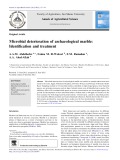
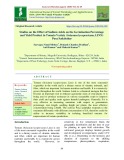
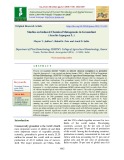
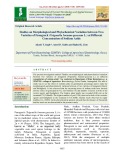
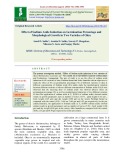
![Selection of genotype and mutagens in M1 generation for establishment of mutation breeding programme in mungbean [Vigna radiata (L.) Wilczek] Selection of genotype and mutagens in M1 generation for establishment of mutation breeding programme in mungbean [Vigna radiata (L.) Wilczek]](https://tailieu.vn/image/document/thumbnail/2020/20200322/nguaconbaynhay4/135x160/5631584870768.jpg)
